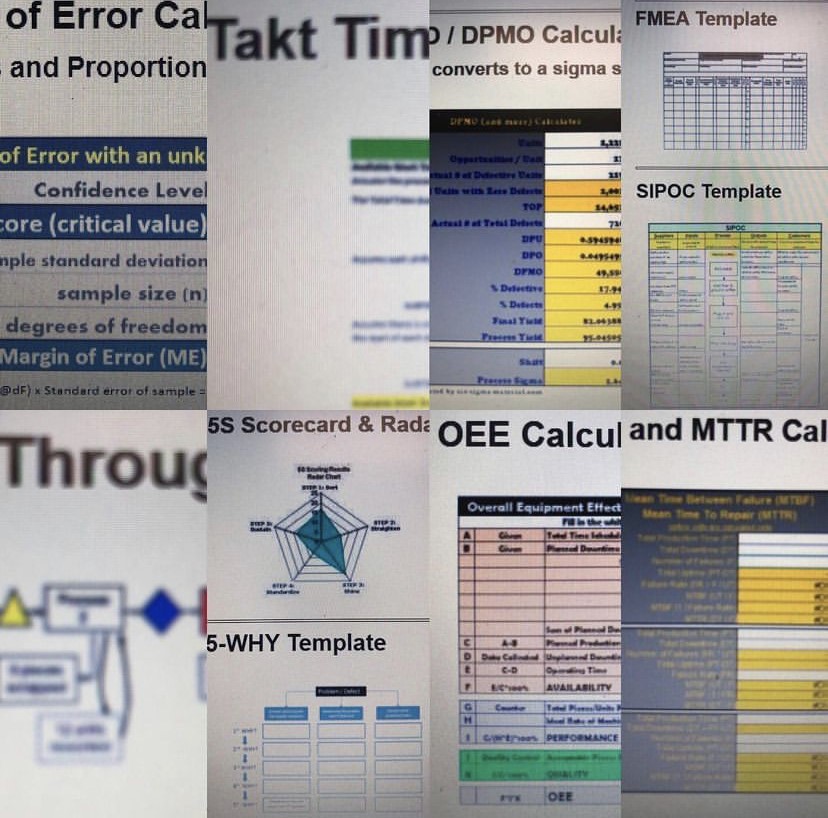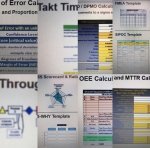Project Acceleration
 |
Any project of any type can benefit from techniques of acceleration and reducing the amount of time from contract to closure. The techniques can be considered to move off a sticking point within a particular phase of a project or applied to the overall project. Often times, projects get stuck on the MEASURE phase of a DMAIC project due to excitement and desire to collect tons of data or pass a very challenging Measurement Systems Analysis (MSA). This is an example where the Six Sigma GB/BB often runs into adversity and his/her management skills are tested outside of the technical realm. |
The techniques vary in risk. Some of the ideas mentioned later will be low risk and others will be high risk that should involve consensus from the MBB or Executive Leadership.
The techniques vary in effort (... and expected results from that effort). An Elevator Speech is a small technique that may be enough to enhance the motivation of one individual or team. But don't expect the Elevator Speech alone to drastically accelerate the project.
And perhaps, that speech needs to come from someone on the team or a well-respected member of upper management.
Lower risk - Lower effort
Stakeholder Analysis - you may need to remove a person or add a key resource.
Elevator Speech - motivate someone or the entire team.
Icebreakers - improve the team cohesiveness to bring faster results.
Self-Reflection - examine your style, delivery, and how you can better motivate.
KPIV's - focus on the Key Inputs only. Don't try to fix everything at once. Perhaps another project can be chartered to work on the next most influential set of input variables.
Lower risk - Higher effort
Kaizen Blitz - hit the "floor". Get a concentrated effort in small time frame.
Increase Resources - maybe more maintenance, IT, human resources can help.
Increase Meetings - but keep them short, effective, and concise.
Increase Multitasking/Concurrent Tasks - this may involve more resources
Increased commitment - higher time commitment from team members. Again, reflect on yourself. Can you devote more time to the project?
Invite leadership, MBB, or other highly visible person to meetings to understand the team status and see firsthand any obstacles or risk.
Higher risk - Lower effort
Increase Alpha and/or Beta Risk - should consult with Master Black Belt (MBB). This can reduce the amount of data collection necessary.
Reduce Scope - review the Project Contract with MBB. The scope may not have been intended to be as large as it has turned out. Even if the scope has not grown, the original scope might be too overwhelming.
This could impact the financial expectations of the project so buy-in from MBB or others is a good idea.
Review Assumptions - this pertains to alpha risk, beta risk, normality of data, differences among populations, and explanations for outliers and exceptions granted.
Also, it may be worth reviewing the acceptability limits for the MSA and take a risk at this point to "accept" and move forward.
Reduced DOE - instead of a Full Factorial, a collective decision may be to reduce experiments and apply a Half-Factorial.
Higher risk - Higher effort
There may be tasks that are better performed in a sequence. It may be worth the risk to try and start the tasks immediately and sacrifice some level of risk or unknown.
This obviously depends on the task and specific project but put some thought to move the task forward and assigning more resources to those.
Be mindful of some Project Pitfalls. Sometimes as Project Managers, there is too much emphasis on the gathering and analyzing tons of data.
More data is always nice, but it usually comes at a cost and lost time.
Use Templates, Tables, and Calculators
Use pre-designed templates and calculators whenever possible. A lot of time can be saved using tools that already exist. Usually, others in your field or company will have created templates, reference guides, etc.
It is advised to get a hold of as many tools as possible and save them just in case they become applicable for your project.
Use Caution:
There are often assumptions built into templates and calculators (such as 1.5 sigma shift when calculating a short- or long-term sigma score). Make sure to understand the formulas within the spreadsheet and run mock examples to ensure you get the correct results.
Click here to find over a dozen templates and calculators available to help accelerate a Six Sigma project. We include an Example tab (and check for comments for more information) to help illustrate the best way to use the template.
Time Consuming Tools/Phases
 |
These tools and phases of a project can consume a lot of time, resources, and should be well prepared in advance to avoid an unexpected delay.
|
One myth is that the statistical analysis is frequently noted as a time-consuming phase for a GB/BB.
However, if the data is available, clean, and the GB/BB knows the proper hypothesis and statistical test to apply, then this part is very quick to complete.
The challenge is collecting, properly recording the data, entering the data correctly in the software, making the correct practical decision from the statistics.
Also, most statistical programs are NOT the place to clean up, mine, and filter data. Take the time to look for suspect data, organize, clean, run validation, filters in Excel (or similar program). Once the data is clean, then paste it directly into the statistical software.
Save and clearly label the data that you use for the final statistical analysis. You will find yourself revisiting the data for the project or possibly as a reference guide for a future project.
Keep good notes regarding issues, anomalies, patterns and questions that may arise as you go through the data.
The Subjective Screening Tools (Fishbone, Correlation Matrix, FMEA) require the entire team to gather, brainstorm, and provide feedback. This often generates a lot of conversation and some of it can be highly relevant and valuable to the team and others can be derailing.
As the Six Sigma Project Manager, be cognitive of this and keep the team moving forward while being sensitive to the passion from the members.
Search Six Sigma related job openings

Site Membership
LEARN MORE
Six Sigma
Templates, Tables & Calculators
Six Sigma Slides
Green Belt Program (1,000+ Slides)
Basic Statistics
Cost of Quality
SPC
Control Charts
Process Mapping
Capability Studies
MSA
SIPOC
Cause & Effect Matrix
FMEA
Multivariate Analysis
Central Limit Theorem
Confidence Intervals
Hypothesis Testing
Normality
T Tests
1-Way ANOVA
Chi-Square
Correlation
Regression
Control Plan
Kaizen
MTBF and MTTR
Project Pitfalls
Error Proofing
Z Scores
OEE
Takt Time
Line Balancing
Yield Metrics
Sampling Methods
Data Classification
Practice Exam
... and more





